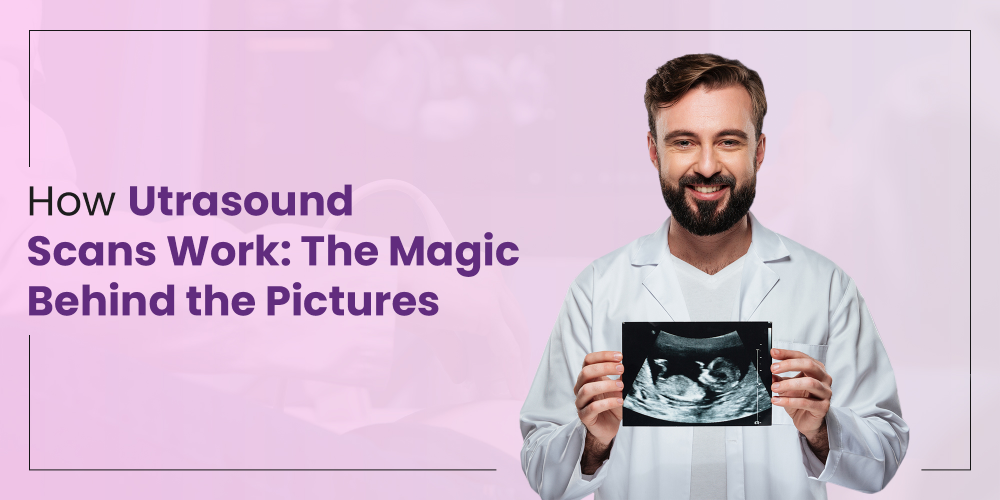Ultrasonic scans use high-frequency sound waves to provide images of the internal parts of the body. They can identify problems in different organs and also aid in assessing embryonic development.
Sonography, or ultrasound scans, are safe because they create images using sound waves or echoes rather than radiation.
You can undergo this procedure while you’re pregnant.
Ultrasound exams can identify issues with the liver, heart, kidney, or abdomen and are used to assess fetal development. They might also help with some kinds of biopsies.
How Does Ultrasound Operate or Work?
The many components of an ultrasound machine cooperate to transmit sound waves to the body, record the waves that are emitted from the body, and convert them into an image.
High-frequency sound waves, usually between 2 and 18 megahertz (MHz), are first generated during an ultrasound or sonography scan. Using a transducer, these sound waves are sent to the component that has to be scanned. The purpose of the portable transducer is to generate and receive sound waves.
The many tissues in the body partially reflect sound waves back to the transducer. Organs, tissues, and bodily fluids all reflect sound waves in different ways.
The reflected sound waves are picked up by the transducer. Real-time processing of the reflected sound waves by the transducer’s computer creates a visual representation of the body’s anatomy in two dimensions.
Benefits of Ultrasound in Clinical Settings
There are several benefits to sonography, some of them are as follows:
- Compared to other imaging modalities, ultrasound offers a number of benefits. It is utilized in a wide range of clinical situations to illustrate pathologies and characteristics.
- Ultrasound is especially crucial for evaluating the fetus and gonads because it uses non-ionizing sound waves and has not been linked to carcinogenesis.
- Ultrasound is more accessible than more sophisticated cross-sectional modalities like CT or MRI in the majority of centres.
- Compared to CT or MRI, ultrasonography examinations are less expensive to do.
- Unlike CT/MRI, ultrasonography is simple to perform and portable.
- Compared to MRI or contrast-enhanced CT, ultrasonography has few, if any, contraindications.
- Ultrasound imaging’s real-time capability helps assess both anatomy and physiology (e.g. fetal heart rate).
- A dimension of physiological data that is unavailable on other modalities (except from some MRI sequences) is added by Doppler evaluation of organs and arteries.
- Compared to CT or MRI, ultrasound images might not be as negatively impacted by metallic items.
- It is simple to expand an ultrasound examination to assess the contralateral extremities or another organ system.
Other Benefits
- Non-invasive: Sonography is safe for patients because it doesn’t involve surgery or ionizing radiation.
- Economical: Sonography is less expensive than other imaging methods like MRIs or CT scans.
- Imaging in real-times: It enables your physician to see the body’s moving parts, including the heart, blood flow, and fetal development.
- Adaptability: Because ultrasound can view the pelvis, heart, blood vessels, abdomen, and other regions of the body, it is regarded as a versatile tool.

